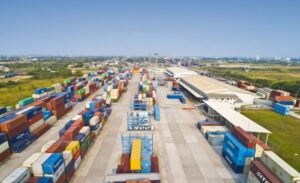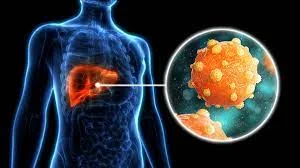Sometime in 2016, the then-Executive Secretary of the Nigerian Shippers’ Council; Mr Hassan Bello met with concessionaires of the various Inland Dry Ports in the country. He gave a simple message, which was – get the projects back on track on get sacked.

At that meeting, Bello, whose Council superintends the dry port projects also disclosed at the meeting that a new agreement had been drafted with specific and achievable time lag.
The meeting was attended by representatives of all the dry ports concessionaires from across the country, and the agenda was one – to tell them how displeased the Nigerian Shippers’ Council is about the progress made so far.
To give vent to the Council’s displeasure, Bello threatened to terminate the concession agreements with operators of the various facilities. A new agreement was also given to the concessionaires.
He said that the time lag of execution of the dry ports projects was included in the new agreement which was also in tune with the legal framework of Public Private Partnership (PPP).
He told the concessionaires that, “If we notice some inertia or unwillingness on the part of any concessionaire, we will not hesitate to terminate the agreement”.
Sadly, since 2016, only one IDP has been fully-commissioned and working. That is, the Kaduna Inland Dry Port (KIDP). The Dala Inland Dry Port is yet to begin commercial operation, even though it has been completed.
As good as they are, Nigeria has been battling with getting these facilities that are located in Isiala-Ngwa (Aba, Abia state), Ibadan in Oyo state, Dala in Kano state, Jos in Plataea state, Funtua and Maiduguri, to take-off.
The proponents of inland dry ports argue that their benefits include the fact it will come with establishment of customs clearance facility close to production and consumption centres, improved container usage and reduction in the movement of empty containers, improved turn- around time of ships thereby reducing demurrage and avoiding pilferage.
They also posited that an IDD comes with issuance of “Through Bill of Lading” by shipping lines and thereby assuming liability from dispatch to destination ports, lower freight to increase trade flows, optimal use of surface transport and the decongestion of the sea ports and reduction in marine pollution activities around the seaport.
Added to these are the fact a dry port offers easy and safe access to international shipping facilities in the hinterland giving a boost to inland trading, revitalization of export agriculture leading to multi-product economy and the avoidance of employment opportunities stemming urban-rural drift and increase in revenue to the government as well as rehabilitation of the surface transport system and enhanced usage of containers.
But, the dry port story actually started in 2006, when the Federal Executive Council approved the commencement of Inland Container Depot ( as they were ten called) project at six locations in the country under Build Operate Own and Transfer (BOOT) agreement. To give a further vent to its determination to get it off the ground, the ICD policy was gazetted through a Federal Republic of Nigeria Official Gazette No.30 volume 94 of 21st May, 2007.
The United Nations Conference on Trade and Development (UNCTAD) defines an ICD as “a common user facility with public authority status equipped with fixed installation and offering services for landing and temporary storage of export, laden and empty containers Carried Under Customs Control and with Customs and other agencies competent to clear goods for home use, warehousing, and export, temporary storage for onward transit and outright export”.
Read Also: Why do you think the Inland Dry Ports in the South are not receiving attention?
It is an equivalent of a seaport located in the hinterland. It receives container by rail from the seaport for examination and clearance by Nigeria Customs Services. It has all the loading and off-loading equipment needed to handle container and general cargo.
It is however heartwarming that, two of the IDPs are ready in the north. The first to kick-start operations is the one in Kaduna. Recently, the new Minister of Transportation, Engr Muazu Sambo declared the Dala Inland Dry Port in Kano State as a port of origin and destination.
What this means is that at least two IDPs in the north have crossed a major step towards functioning like a seaport.
Sadly, none of the IDPs in the South is nearing any significance. In fact, none of them can boast of 30 percent completion.
Nevertheless, we commend the Nigerian Shippers’ Council for holding on to the inland dry port dream, even in the face of all challenges.
We however, urge the Council to assist other IDPs, especially in the areas of investors and securing the total buy-in of the state governments where those IDPs are to be located.
Finally, declaring an IDP as a port of origin and destination is not that is required. The Federal Government must take it further by ensuring that there are adequate infrastructures and rail link in the facilities that are ready.
Kindly like us on Facebook/twitter















